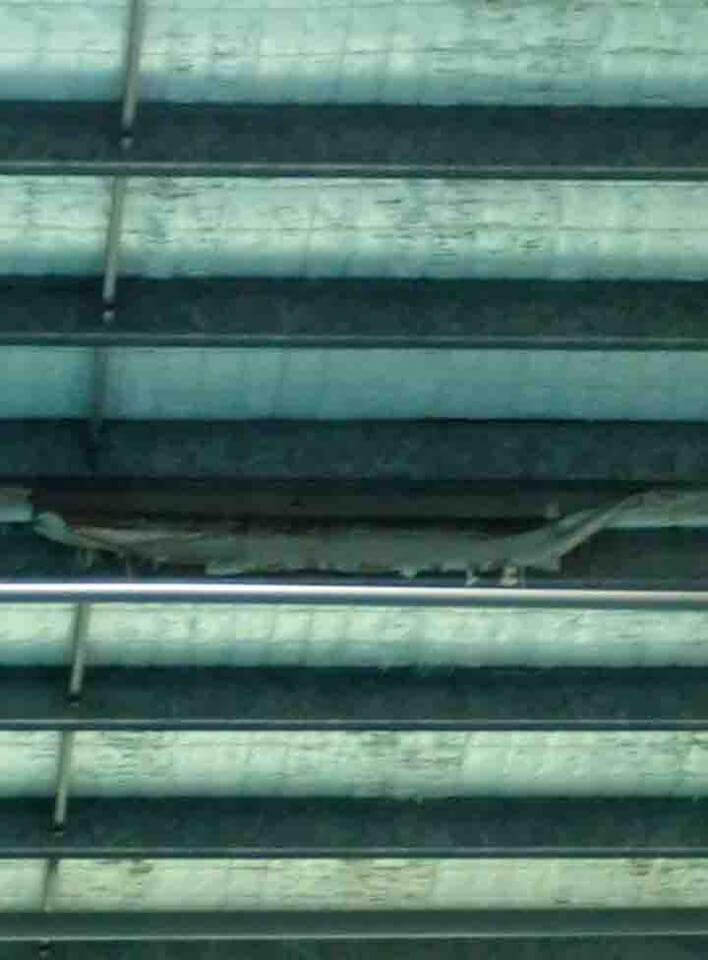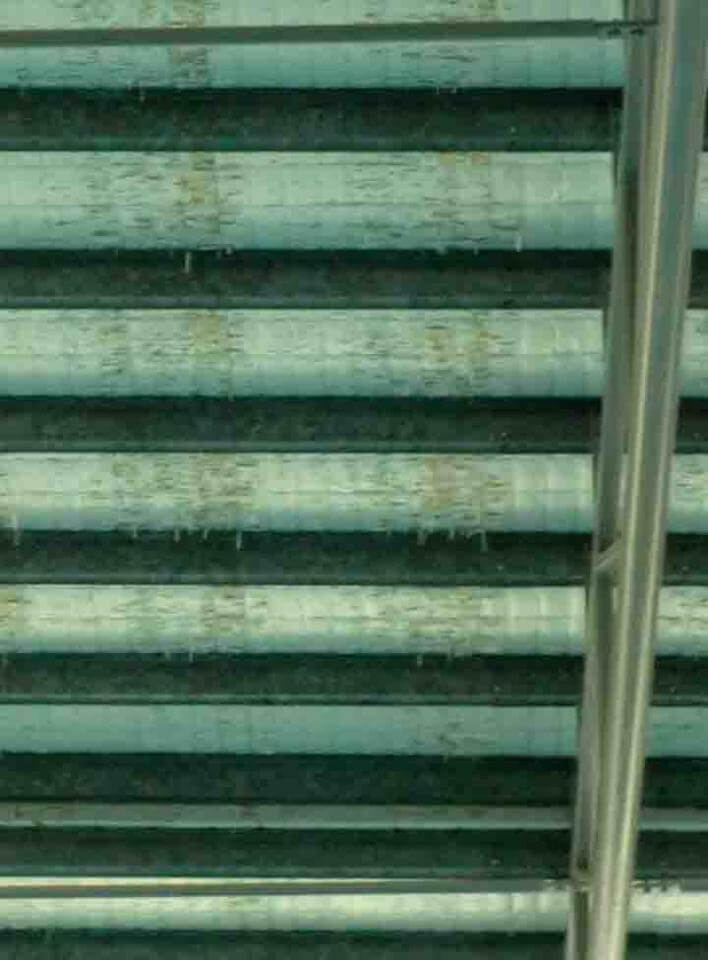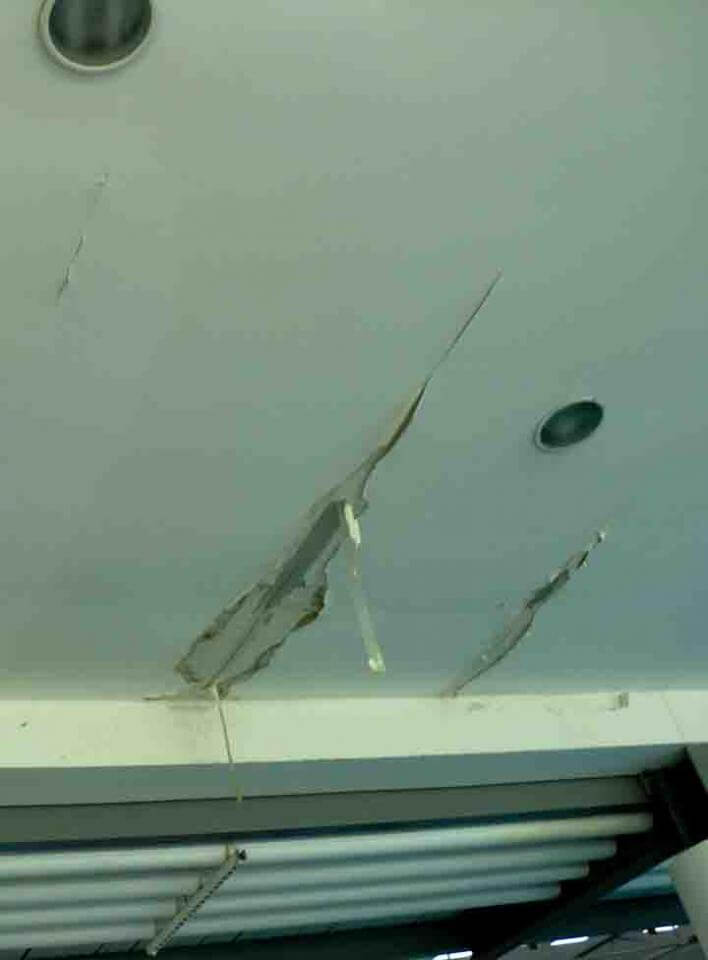“One of the most difficult buildings to build is a building with a swimming pool because – wait for it –there is a swimming pool inside.”
Is it any wonder that heated indoor swimming pool roofs in Australia tend to have a very short life span and are a constant source of moisture and corrosion related headaches for facilities managers and local authorities that need to ensure their facilities remain open and provide a safe environment.
Next time you are at the local swimming pool take a look up the roof and keep an eye out for damp staining on suspended ceilings. If the foil faced insulation blanket is exposed, is it in good condition and continuous? At my local pool I was not surprised at what I saw.
(see images on the right of your screen)
The pool just down the road at Lane Cove has suffered corrosion, with the local council already down $1million in legal fees over the past 4 years as part of an action taken against the builders and architects.
In Victoria, closure for refurbishment of the Collingwood aquatic centre was brought forward as the council was forced to close twice in six months because of problems with a 30 year old “ageing roof structure.”
In Canberra, the original Australian Institute of Sport Aquatic Centre is on its third roof since 1984 after requiring major structural work in 2010 to resolve corrosion issues resulting from condensation. This work had to be completed with the added complication of keeping the facility open.
Anyone involved in the design of indoor swimming pools or investigating condensation related issues with a swimming pool should read Joseph W. Lstiburek’s very accessible Building Science Insight which is an edited version of the insight that first appeared in the ASHRAE Journal.
“The problem is fundamentally pretty straightforward. We have a huge internal moisture load that, for once, you cannot blame on your mechanical engineer or HVAC contractor. There’s a pool filled with water in your building for Pete’s sake. You can’t dehumidify your way out of the problem; you can’t ventilate your way out of the problem. You can localize the problem by depressurizing the pool area relative to adjacent spaces or by pressurizing a boundary space between the pool area and adjacent areas, but, in the pool area, you are pretty much toast.”
“The problem is fundamentally pretty straightforward. We have a huge internal moisture load that, for once, you cannot blame on your mechanical engineer or HVAC contractor. There’s a pool filled with water in your building for Pete’s sake. You can’t dehumidify your way out of the problem; you can’t ventilate your way out of the problem. You can localize the problem by depressurizing the pool area relative to adjacent spaces or by pressurizing a boundary space between the pool area and adjacent areas, but, in the pool area, you are pretty much toast.”

“The problem is fundamentally pretty straightforward. We have a huge internal moisture load that, for once, you cannot blame on your mechanical engineer or HVAC contractor. There’s a pool filled with water in your building for Pete’s sake. You can’t dehumidify your way out of the problem; you can’t ventilate your way out of the problem. You can localize the problem by depressurizing the pool area relative to adjacent spaces or by pressurizing a boundary space between the pool area and adjacent areas, but, in the pool area, you are pretty much toast.”
“We need to be perfect. And the only wall that will work, of course, is “the perfect wall.” We have been here before. Put the water control layer, the air control layer, the vapor control layer and the thermal control layer on the outside of the structure. Put everything else inside, especially the services. Same for the roof. Done.”
Got to wonder what has been going on up here?
“A few little tricks of the trade – think of cladding as a dehumidifier that sucks moisture out of the shaded stuff. That means the back of the cladding will get wet if there is a flaw in your wall. What are the odds of there being a flaw or less than perfect workmanship? If I were using wood cladding, I would not just back ventilate it, I would back-coat it with primer and paint. Just like the old guys used to. I do not want the wood to absorb water. If it does, it can leach tannins and other water-soluble extractives. Ask me how I know?”
“If it is cement siding, you had better coat it on the backside, as well as ventilate it. If you have brick, you had better ventilate the heck out of the space.”
“If it is metal, you had better think a lot about stainless steel and magic pookey to protect it, as well as good cladding ventilation. If there is a flaw and air gets out, the air is going to be carrying more than just water vapor: chlorine, bromine and other aggressive oxidizing (a.k.a. corrosive) agents. You ever see what they put into the water? It will eat your insides out and the insides of your wall assembly as well.”
This is all that stands between the vapour and the roof sheet
Useful links
Case Studies
- Australian Institute of Sports Aquatic Training & Testing Centre
(Built 1984) Roof refurbishment 2010 - Australian Institute of Sport Aquatic Training & Testing Centre
(Built 2008)
Products
Not getting a good feeling about vapour barrier integrity.
By Andy Russell
General Manager









